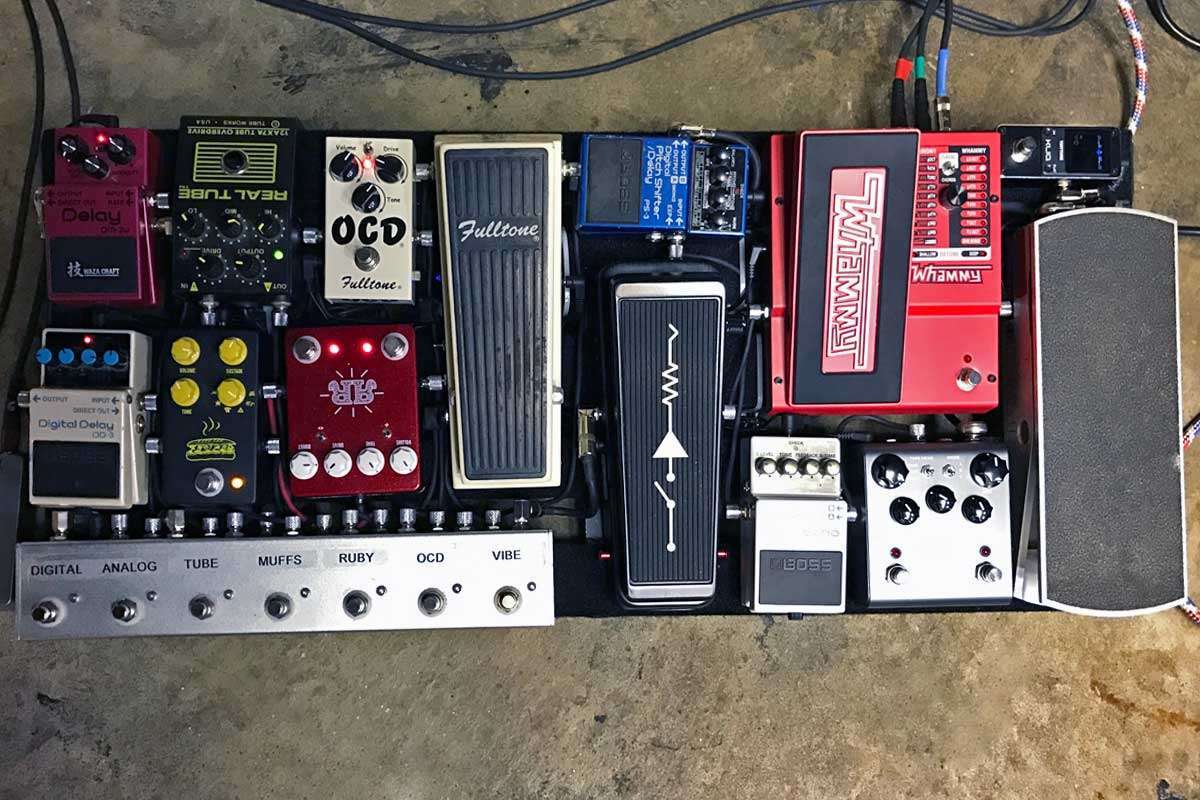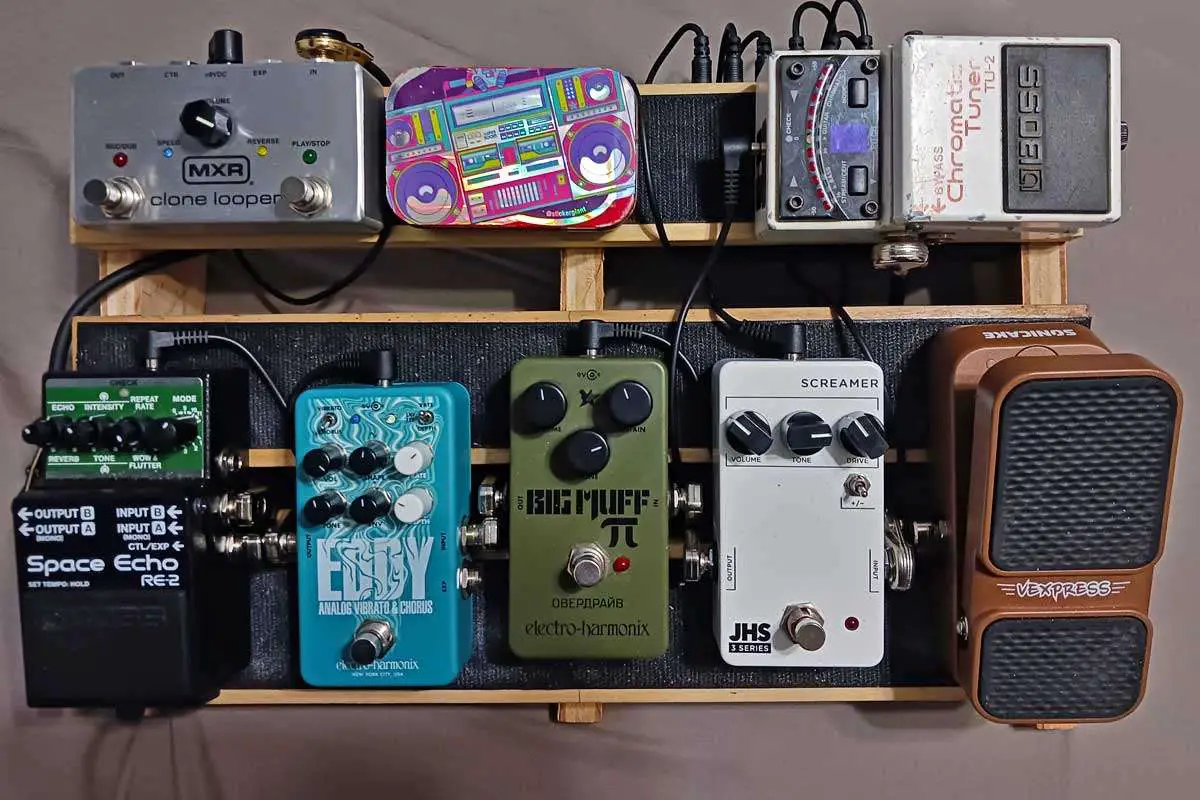A guitar expression pedal is a dynamic tool for musicians seeking to add depth and control to their sound. With your foot on the pedal, you have the power to manipulate various aspects of the guitar’s tone in real-time. Picture yourself on stage, crafting sweeps of volume or waves of whammy bar dives without interrupting your playing to adjust knobs or switches. The expression pedal connects to compatible effect units or amplifiers and acts as a remote control, allowing for adjustments to effects parameters such as delay length, modulation rate, or even the mix of wet and dry signals.
Understanding the placement and integration of an expression pedal in your signal chain is crucial. You plug it in between your guitar and an effect or amplifier that supports expression control. This enables you to add nuanced expressiveness to your playing—similar to how a pianist uses a sustain pedal or a violinist applies vibrato. Whether you are looking to subtly evolve a melody or introduce dramatic shifts in ambience, incorporating an expression pedal can expand your musical expression. Embracing this tool opens a new dimension in performance, offering you a creative avenue to truly personalize your sound.
Related: Some of the best expression pedals on the market

Understanding Guitar Expression Pedals
Expression pedals enhance your musical interaction by providing real-time control over certain effects parameters. Typically used with electric guitars, they allow you to adjust effects parameters with your foot, enabling you to perform more dynamically and with greater expressiveness.
When you’re playing, the functionality of an expression pedal offers you hands-free operation. Here’s how:
- Heel down position: Usually zeroes the effect parameter.
- Toe down position: Maximizes the effect parameter.
- By shifting your foot position between these extremes, you bring nuance to your sound.
Common uses of expression pedals include:
- Controlling volume for swells or fades.
- Adjusting the depth or rate of modulation effects such as wah-wah, phasers, and tremolos.
- Manipulating delay parameters like feedback and time for evolving soundscapes.
The musical expression you can achieve with these pedals is substantial because they react to the pressure and position of your foot, letting you dial in the subtleties of your sound during a performance.aptic feedback or with LED indicators displaying the current setting level.
Remember, not all pedals have this capability built-in; some require an external expression pedal. Check compatibility with your effects units to ensure seamless integration into your pedalboard setup.
Key Features and Compatibility
When selecting an expression pedal for your guitar setup, it’s essential to consider its compatibility with other pedals, adjustability of parameters, and overall build quality for lasting use.

Pedal Compatibility and Connectivity
Your expression pedal should integrate seamlessly with your pedalboard. Look for dual TRS and TS connections to ensure broad compatibility. For example, the Boss EV-30 Dual Expression Pedal is designed with dual outputs for controlling two different devices.
Parameter Control and Flexibility
Expression pedals give you the freedom to make real-time parameter adjustments. The range of parameters you can control, from modulation to delay, requires a responsive pedal. Flexibility is key, as seen with the Moog EP-3 Expression Pedal, allowing for precise control across various effects.
Construction and Durability
Look for a pedal built to withstand a heavy foot. Cast aluminum housing and non-slip rubber pads are indicators of good build quality and durability. The craftsmanship of pedals like the Mission Engineering SP-1 Expression Pedal demonstrates this durability.
Volume Control and Sound Dynamics
Expression pedals provide nuanced volume swells and dynamic control over your instrument’s sound. Choose a pedal that offers smooth volume transitions without sacrificing tone.
Pricing and Value for Money
Whether you’re on a budget or looking for a premium option, weigh the cost-effectiveness of the pedal. The Behringer lineup often offers value for those conscious of price, while premium models from Boss or Electro-Harmonix offer enhanced features at a higher cost.
Notable Models and Brands
Familiarizing yourself with reputable brands can guide your purchasing decision. The Boss FV-500, M-Audio EX-P Expression Pedal, and Nektar NX-P Universal Expression Pedal are notable for their quality and range.
Integrating Expression Pedals with Effects Units
When you incorporate an expression pedal into your effects unit setup, you gain real-time control over various parameters, from modulation and pitch to tremolo and reverb intensity. This integration enables a more dynamic and responsive playing experience.
Enhancing Effects Pedals with Expression
An expression pedal can take your modulation effects to new heights. For instance, with a reverb pedal, you can adjust the level of ambiance on the fly, or use the pedal to modify the rate of a tremolo effect, giving you real-time control over the intensity of these effects.
Compatibility with Multi-Effects and Synthesizers
Multi-effects units and synthesizers commonly support expression pedals, allowing you to manipulate a vast array of tones and effects seamlessly. Ensure that the polarity switch on your expression pedal matches the device you’re connecting to, as this dictates compatibility.
Expression Pedals and Amplifiers
Expression pedals can control amplifier functions like volume and gain. When connected to an amplifier with an expression input, you can adjust your sound’s dynamic range without taking your hands off your guitar.
Specialized Expression Controls
A dual expression pedal grants control over two different device parameters simultaneously, such as volume and expression, or even parameters on different devices. The polarity switch is essential for ensuring the expression pedal communicates correctly with whatever unit it’s controlling.
Advanced Techniques and Usage
When you incorporate an expression pedal into your guitar setup, you unlock a realm of nuanced musical expression. Acquiring the skill to deftly manipulate this tool not only enhances your playing experience but can transform a standard guitar solo into a dynamic performance. Here are some advanced techniques to elevate your prowess as a guitarist:
- Volume Swells: By rocking your foot back and forth on the pedal, you can create a violin-like effect, bringing notes in and out of the soundscape, perfect for emotional pieces.
- Filter Sweeps: Utilize your expression pedal to execute sweeping filter changes. This can emulate a wah pedal and is often used to add a voice-like character to lead lines.
- Dynamic Delay: Alter the feedback and delay time with your expression pedal. This can produce futuristic soundscapes or rhythmic echoes that react to your playing dynamics.
- Real-time Modulation Control: Manipulate modulation rates of phasers, flangers, or tremolos mid-performance to accentuate parts of your solos or rhythm playing.
- Assignable Parameters: Some pedals allow you to assign different parameters to the expression pedal for various effects, making it a true game-changer in your setup.
Here’s a quick reference for these techniques:
| Technique | How It Enhances Play |
|---|---|
| Volume Swells | Adds emotion and fluidity |
| Filter Sweeps | Creates vocal-like textures |
| Dynamic Delay | Produces versatile echo effects |
| Real-time Modulation | Intensifies solos and rhythm parts |
| Assignable Parameters | Offers extensive creative control |
Embrace these techniques with regular practice. They will not only sharpen your expressive capabilities but also add a layer of sophistication to your performance.
